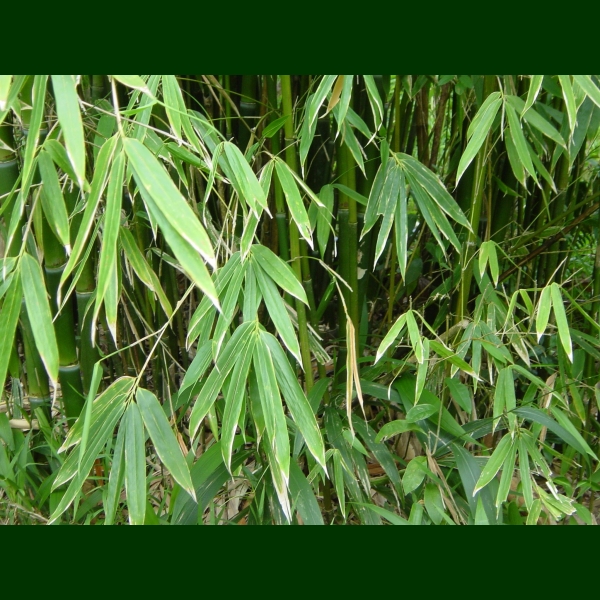 Hawaiian Name(s): ‘ohe
Hawaiian Name(s): ‘oheScientific Name: Schizostachyum glaucifolium
Vernacular Name: native bamboo, Polynesian bamboo
Family: Poaceae
Status: Polynesian introduction
Authority: (Rupr.) Munro
Description: Large, arborescent grass with hardned culms (stalks), forming large clumps/small groves 9-12 m tall.
Habitat Occurs in mesic valleys in shaded habitats along streams between 60–275 m on some main islands (Wagner et al. 1990:1591).
Medicines: As a treatment for kolekole ‘a‘ai (festering raw sores), puho (abcesses), and pu‘upu‘u nunui, the ashes of the ‘ohe are combined with powdered ‘ahu‘awa (Cyperus javanicus) and lama (Diospyros spp.), as well as the sap of green kukui fruits (Aleurites moluccana) and ripe milikana (papaya, Carica papaya); this is applied topically. For a sharp pain in the stomach and pain associated with profuse sweating, powdered ‘ohe os mixed with water and consumed (Chun 1994:223).
Non Medicinal Uses: The long, hollow culms (stalks) of the ‘ohe were used in numerous ways. As musical instruments: the ka‘eke‘eke are lengths of 'ohe struck on the ground to produce a hollow deep sound (Krauss 1993:81) and short lengths with nodes also used for ‘ohe hano ihu (nose flutes) (Buck 1964:390–391). Also, pieces with nodes (40-60 cm long) were used to make pu'ili (split-bamboo rattles) used in hula (Abbott 1992:120; Krauss 1993:81). Frame for houses, fishing rods, racing sleds, used as irrigation pipes, used to make knives and needles, kapa design sticks (lapa) and stamps (‘ohe kalapa) (Abbott 1993:52–54; Lucas 1982: 13). In net-making, ‘ohe can be used for net spacers and net shuttles or hi‘a ka ‘upena (Krauss 1993:35).
Specific gravity of wood: unknown
Famous Locations: Kuikuilaumania/Homaikaohe (Hilo): fine, large ohe, used particularly for cicumcising; Halai (Hilo)- used for fishing rods.
Mele:
`Ōlelo Noeau:
Dye Color and Parts:
Kino lau: Kāne
Location on Bishop Museum Kalihi Campus:
Propagation Information:
